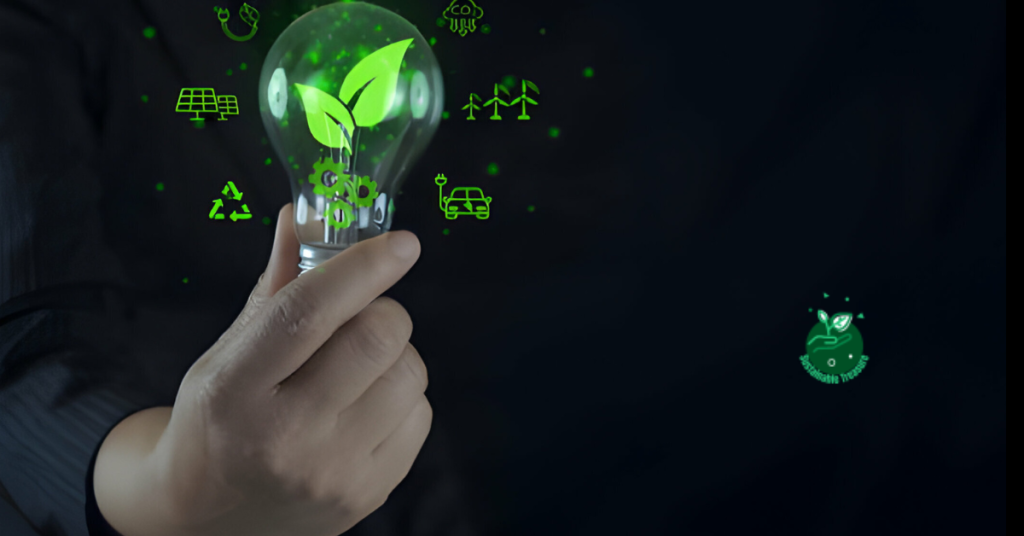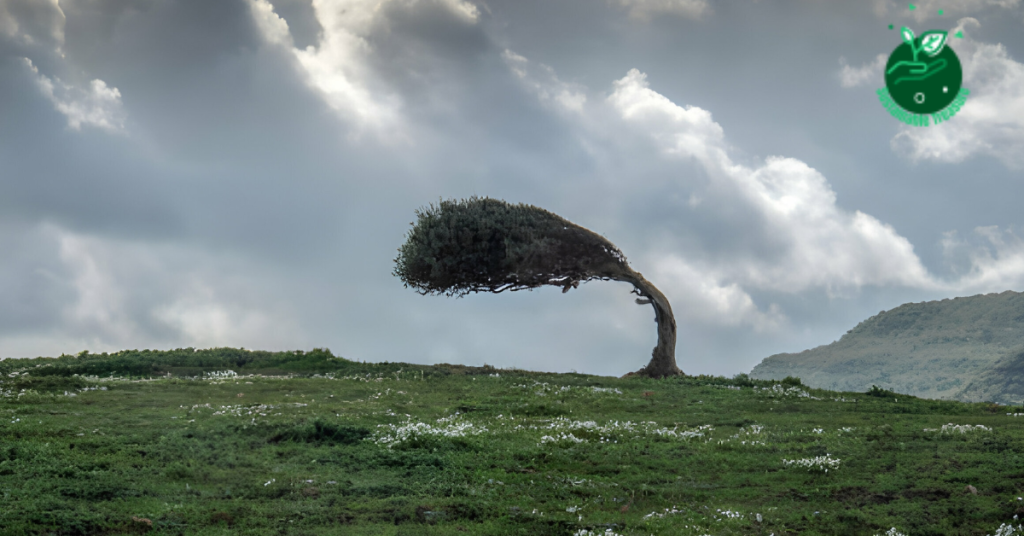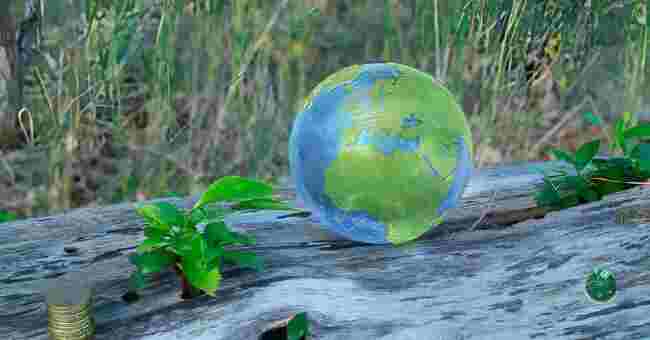Last updated on May 19th, 2024 at 09:15 am
Do you wish to know when biodiversity increases sustainability? This may seem like an academic question, but it slapped me in the face during my travels to coastal Kenya last summer.
I witnessed firsthand the collapsing fisheries, dying coral reefs and destitute fishing villages struggling with declining catches.
Researchers highlighted how loss of fish diversity and critical coastal habitats undermined ecosystem resilience and productivity.
Depleted stocks and sewage-polluted waters could barely support local livelihoods, let alone sustainably power their nation’s economy. The environment was falling apart… taking local communities down with it. I returned home heartbroken yet committed to action.
In this guide, I will clearly explain the mechanisms by which biodiversity strengthens ecological sustainability. I’ll explore how maintaining nature’s intricate diversity should be central to our shared vision of prospering in harmony with thriving, resilient ecosystems.
Overview: Biodiversity is the Key to Sustainability
Sustainability has become a buzzword in recent years. Companies boast about their sustainable practices. Politicians proclaim plans for sustainable development. Activists march for sustainable societies. But what does sustainability truly mean and why is it so important?
At its core, sustainability refers to the long-term health and viability of interconnected social, economic, and environmental systems. A sustainable world meets the needs of the present without compromising future generations’ ability to meet their own needs. The concept rests on three pillars that support collective human wellbeing: ecological integrity, economic prosperity, and social equity.
Of the three pillars though, the environmental dimension is most fundamental. Without functioning ecosystems and natural resources, human civilizations could not exist. Yet, the accelerating biodiversity crisis now threatens the web of life that sustains us. Protecting nature and biodiversity is thus essential for upholding the environmental ceiling on which both economic and social sustainability depends.
Biodiversity Supports Resilient Ecosystems

Biodiversity refers to all the variation of life found on Earth, encompassing all species of plants, animals, fungi and microorganisms and the communities that they form. This includes both common and rare organisms as well as the genetic diversity within species.
Diverse ecosystems with many different organisms can better withstand natural disasters, invasions by alien species, pollution, habitat degradation and climate change impacts compared to less biodiverse systems. Variation at both the species and genetic levels provides functional redundancies that act as biological insurance in changing environments. If one element is lost, there are back-ups that help the system adapt and maintain core functions.
For example, the diverse assembly of plants in temperate grasslands allows productivity and soil health to be maintained even if some species disappear. Having multiple pollinator species that respond differently to perturbations ensures ongoing pollination services critical for both natural community stability and agriculture. Genetically-varied tree populations enhance forests’ resilience to drought, pests and other stresses that may become more frequent with climate change.
Simply put: more biodiversity means healthier, more resilient ecosystems that can better support human life. Protecting biodiversity is essential for buffering ecosystems against intensifying anthropogenic pressures in the 21st century.
| Term | Definition |
|---|---|
| Biodiversity | The variety of plant and animal life on earth |
| Ecosystem | A biological community of interacting organisms and their physical environment |
Biodiversity Underpins Food and Water Security
Beyond bolstering ecosystem resilience, biodiversity also directly supplies critical services that humans rely on. This includes provisioning services that provide the food, medicines, fibers and fuel that global civilizations depend on for meeting basic needs.
Agriculture stands out as one sector that is particularly biodiversity-dependent. Crops originated from wild plant relatives over thousands of years of selective breeding. The genetic diversity found in crop centers of origin provides breeders with essential raw material for adapting varieties to new stresses like drought or emerging pests. As conditions shift with climate change, maintaining crop diversity and access to wild germplasm will be crucial for global food security.
Beyond crop genetics, biodiversity in agricultural landscapes also regulates critical ecosystem services like soil fertility, water cycling and pollination that underpin productivity. Diverse farming systems with integrated crop and livestock production sustain soils better than intensive monocultures through nutrient cycling. Maintaining patches of wild vegetation and trees ensures Regulation services like water infiltration and local climate regulation. Protecting pollinator habitats and species diversity is likewise essential for the 35% of global crop production that benefits from animal pollination each year.
In these ways, conserving and sustainably utilizing agricultural biodiversity generates multiple wins: enhancing productivity today while maintaining options to adapt food systems for tomorrow.
Biodiversity Sustains Societies and Economies
Looking beyond specific ecosystem services, biodiversity also directly sustains livelihoods and entire economic sectors. Millions of jobs in agriculture, forestry, fisheries and tourism rely on harnessing renewable flows of materials, energy and information from diverse natural systems on land and in oceans. Pharmaceutical, biotechnology and cosmetic industries similarly depend on genetic resources for developing commercial products.
Intact, biodiverse habitats also provide essential but often overlooked regulation services like waste assimilation, erosion control and carbon storage. Peatlands, mangroves and old-growth forests are particularly valuable for moderating flooding, enhancing water quality and sequestering carbon to regulate the global climate. Yet these critical habitats continue to be degraded and deforested despite their outsized importance for local and global sustainability.
Finally, emotional and psychological benefits that humans derive from interactions with thriving nature should not be discounted. Access to green spaces and culturally significant landscapes provides recreational opportunities and spiritual nourishment. Protecting iconic wildlife, majestic forests and free-flowing rivers likewise helps uphold many communities’ sense of place, culture and mental health^.
In all these ways, biodiverse systems act as the living infrastructure underpinning social and economic aspects of sustainability across scales, from local villages to the globalized economy. Yet this natural capital has too often been taken for granted and excluded from economic calculations and policy decisions.
Safeguarding Biodiversity for Sustainable Futures
The multifaceted values of biodiversity mean that its accelerating global decline over past decades jeopardizes sustainability initiatives across sectors. The two main direct drivers of biodiversity loss have been habitat change from land use conversion, and overexploitation from uncontrolled hunting, fishing and harvesting. These combine with other anthropogenic threats like climate change, pollution and invasive species to push Earth into a sixth mass extinction event.
Reversing the biodiversity crisis is thus critical for putting human civilization on a truly sustainable trajectory. This requires holistic “all hands on deck” approaches to conserve intact ecosystems and allow degraded ones to recover.
Prioritizing Habitat Conservation
Expanded terrestrial and marine protected areas that are off-limits to exploitation provide refuge for endangered plants and wildlife. Mainstreaming biodiversity considerations into agriculture, forestry, fisheries, and other production landscapes also allows ecosystem protection beyond parks and reserves. For example:
- Agroecology and other biodiversity-based agriculture systems
- Forest and grassland restoration programs
- Sustainable fisheries management policies
Community leadership by indigenous groups and other local stewards is vital for effective habitat conservation that respects traditional knowledge, values and land tenure arrangements. New models of conservation financing likewise provide mechanisms to incentivize biodiversity protection internationally.
Accelerating the Transition to Regenerative Agriculture
Shifting agriculture and food systems away from intensive monocultures towards more holistic, biodiversity-based models aligns production imperatives with conservation goals. Agroecology, mixed farming, silvopastoral systems, and other traditional practices that sustainably integrate trees, diverse crops, and livestock have been shown to:
- Enhance yields while reducing reliance on external agrochemical inputs
- Make farming landscapes more resilient to stressors like drought thanks to on-farm functional biodiversity
- Mitigate soil erosion and enhance carbon sequestration
Such systems sustain intricate webs of soil, plant and wildlife diversity both on and around farms that generate sustainability co-benefits far beyond just yields. Public policies, shifts in consumer demand and access to appropriate financing and incentives can all help in accelerating adoption of biodiversity-enhancing agricultural practices globally.
Tackling Root Drivers of Biodiversity Loss
In addition to conservation and better management strategies, addressing indirect but potent underlying drivers of biodiversity decline like climate change is critical. Curbing greenhouse gas emissions and moving to renewable energy helps mitigate habitat shifts and weather extremes that jeopardize species. Comprehensive pollution controls avert contamination from nutrients, plastic waste and other pollutants winding up in fragile freshwater and marine ecosystems. Managing invasive species pathways similarly limits biological threats to native biodiversity.
While daunting, rapidly transitioning energy, waste and transportation infrastructure to sustainable models is essential for preventing runaway biodiversity loss. Symbiotic policy approaches that align climate change mitigation and adaptation with conservation goals demonstrate the potential for creating harmonized “nature-based solutions” that generate multiple sustainability wins.
Collective Action Needed at All Levels
With biodiversity intrinsically tied to human wellbeing and sustainable futures, reversing its decline will require unprecedented collaboration across civil society. Thankfully, many government entities, corporations, communities and individuals are stepping up to do their part.
Policy Leadership
Over 95 countries have now developed National Biodiversity Strategies and Action Plans (NBSAPs) that outline priorities and pathways for implementing protections under the international Convention on Biodiversity (CBD)). Many jurisdictions are also designating additional terrestrial and marine reserves to expand habitat coverage safeguarded from exploitation. For example, Canada recently committed to conserving 30% of its lands and oceans by 2030.
Governments additionally wield regulatory authority over polluting activities as well as financial powers to incentivize sustainable industries like organic agriculture. Several countries now pay farmers to plant cover crops, reduce fertilizer applications and take other actions that benefit farmland biodiversity.
Corporate Commitments
Hundreds of multinational companies have made voluntary commitments to eliminate deforestation from key commodity supply chains like palm oil or paper pulp that drive tropical forest loss. Conservation financing mechanisms similarly allow corporations to invest in community forest conservation projects internationally as an offset mechanism for residual emissions.
Sustainable sourcing policies, biodiversity impact disclosure requirements, and integrating “One Health” approaches are other ways that the private sector can mainstream biodiversity into business models and operations. Dell, Unilever, Danone and Patagonia count among leaders demonstrating that profits and sustainability can go hand in hand.
Community-Led Conservation
Indigenous communities and other place-based groups have often Developed localized governance institutions centered on maintaining harmonious relationships between people and nature over generations. Revitalizing such community-led approaches to conserve biodiversity on traditional territories complements larger-scale policy interventions.
Payments for ecosystem services (PES) that compensate local stewards for sustainably managing lands also show promise as an additional finance mechanism for grassroots conservation initiatives. Several villages around Mt Elgon National Park in Uganda have participated in such schemes to enhance local forest cover and watershed integrity while improving rural livelihoods.
Individual Actions
Lastly, everyday lifestyle decisions by conscious consumers, youth activists pressuring governments and corporations, nature lovers growing native plants in backyards or urban farmers using regenerative techniques likewise gradually push societies towards more biodiversity-friendly socioeconomic systems.
Citizen science initiatives to monitor local wildlife generate data for conservation planning while connecting people to nearby nature. Reducing personal consumption footprints by avoiding palm oil from deforested areas, cutting food waste and flying less all mitigate pressures on besieged habitats and species around the world.
Such individual-level engagement creates momentum that can ultimately influence policy change nationally and internationally.
| Type of Actor | Examples of Biodiversity Conservation Actions |
|---|---|
| Governments | – Habitat protections – Incentives for sustainable farming – Pollution controls |
| Corporations | – Deforestation-free supply chains – Biodiversity impact disclosures – Conservation financing |
| Communities | – Community-led conservation areas – Participation in PES programs |
| Individuals | – Lifestyle and consumer choices – Citizen science Initiatives – Youth activism |
FAQs

How Does Biodiversity Lead To Sustainability?
Biodiversity supports complex, interconnected ecosystems that can better withstand stresses and shocks. Diverse systems with many different species and habitats provide more ecosystem services that benefit human wellbeing. By bolstering ecological resilience and directly supporting economic sectors like agriculture, tourism and fisheries, rich biodiversity underpins sustainability across its environmental, economic and social dimensions. Declining biodiversity threatens the web of life that human civilization relies upon.
How Does Conservation Of Biodiversity Promote Sustainable Development?
Protecting habitats and species promotes sustainable development in several ways: 1) it maintains ecological integrity to provide a stable environmental foundation for society; 2) it ensures the continuity of renewable natural resources to support local livelihoods and biodiversity-dependent sectors like eco-tourism; 3) it helps regulate ecosystem services like climate stability, water cycling and pollination and 4) it upholds cultural and spiritual connections to nature that enrich human wellbeing. Mainstreaming biodiversity across all economic sectors is vital so that development is ecologically sustainable.
Why Does Higher Biodiversity Means A More Sustainable Ecosystem?
Ecosystems with more biodiversity have more functional redundancies across organisms, making them more resilient. If one species declines, others can compensate to continue providing ecosystem services like water filtration, soil health maintenance and nutrient cycling. Connectivity across diverse habitats also allows organisms to migrate and maintain population stability as conditions change. By being more resilient and adaptive, biodiverse ecosystems can persist sustainably for longer time periods relative to degraded ones.
Which Is An Example Of Biodiversity Contributing To The Sustainability?
Maintaining patches of wild vegetation and trees in and around agricultural fields promotes sustainability in several ways. Various plants help uphold soil health, water infiltration and local climate regulation to support crop productivity. Wildflowers and other non-cropped habitat provide essential food and nesting resources for crop pollinators and natural pest predators. This biodiversity subsequently enhances yields through critical regulatory ecosystem services. Diverse traditional farming systems thus achieve production objectives while also conserving functional biodiversity.
What Is Biodiversity In Environmental Sustainability?
Biodiversity refers to all variation of life at genetic, species and habitat levels. It encompasses rare and common species, productive and non-productive systems, managed landscapes and wilderness. This diversity allows the environment to provide a stable supply of ecosystem services like climate regulation, nutrient cycling, pollination and pest control that have supported human civilizations for millennia. However, biodiversity is now declining faster than any time in human history. Preventing further loss is essential for maintaining the underlying environmental sustainability of human societies.
How Does Biodiversity Decrease The Sustainability Of An Ecosystem?
While higher biodiversity generally increases ecosystem sustainability, invasive species can actually undermine stability and ecological integrity. Non-native plants or animals that establish themselves can reproducibly disrupt food webs and nutrient flows by outcompeting native flora and fauna. In island ecosystems, invasive mammals and reptiles have driven numerous extinctions. Addressing pathways for introductions including trade, travel and landscape disturbance is important for limiting future spread. Removing established invaders through coordinated management restores ecosystem functioning and services.
How Can We Improve Global Biodiversity Sustainability?
Stemming global biodiversity loss requires “all hands on deck” commitments: 1) Expanding protected areas gives threatened species refuge to recover; 2) Incentivizing regenerative agriculture helps harmonize biodiversity conservation with food production; 3) Holding corporations accountable to deforestation-free supply chains reduces habitat destruction; 4) Empowering indigenous communities to lead local conservation initiatives based on traditional knowledge systems; 5) Instituting pollution controls and mitigating climate change tackles indirect pressures on vulnerable species.
How Is Biodiversity Important For All Sustainable Ecosystems?
As biological systems, all ecosystems depend fundamentally on the living organisms that comprise them. Rich biodiversity confers resilience, adaptability, and productivity. Diverse forests better withstand fires thanks to response diversity across constituent trees. Coral reefs recover from bleaching more effectively with varied community assemblages. And agricultural landscapes produce reliably when farmed using agroecological methods that conserve functional diversity above and below ground. Protecting the tapestry of terrestrial, aquatic and marine biodiversity is thus essential for maintaining the many ecosystems that deliver valuable services to humanity.
Conclusion:- Our Future Hangs in the Balance
From resilient ecosystems to stable economies to our own food and water security, human prosperity fundamentally depends on the living fabric of biodiversity that surrounds us. Yet exploitation, habitat loss, climate change and pollution now threaten to irreversibly unravel Earth’s intricate web of life.
Reversing the biodiversity crisis through holistic conservation action is thus an urgent sustainability challenge facing our generation. The coming decade will be decisive for changing course towards more ethical and ecological stewardship of our one shared biosphere.
Everyone has a role to play through policy reforms, innovation in green sectors, grassroots habitat protection or daily lifestyle decisions that minimize pressures on vulnerable species and critical ecosystems. Our individual actions collectively determine whether current and future generations get to continue enjoying the incredible richness of life on Earth.
Will you join the movement to build resilient, biodiverse abundance? Our civilization’s sustainability hangs in the balance.
Image: Credit Istock



